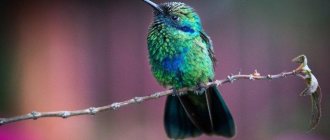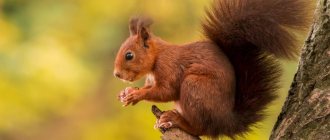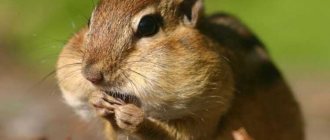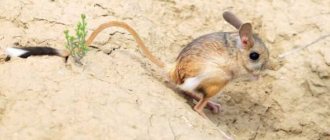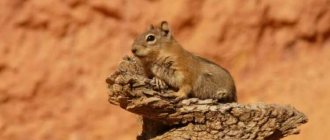In ancient times, birds built their houses in forests on trees, near rocky and sandy cliffs. But today swallow nests can be found in large cities and villages. In the spring, hardworking birds build nests for several days in order to then breed offspring and protect them from attacks by predators. Birds build their homes in the form of a jug, bowl, ball, or dig a long tunnel. We will tell readers about where swallows build their nests, whether they can be eaten and what signs there are.
The first harbingers of spring
They talk about birds arriving in the spring at school. Spring birds arrive in small flocks, and the finches are the first to appear. If you get closer to the finch, you will notice how beautiful the bird is: in what tones its feathers are cast! And green, and red, and brown, and on his head there is a blue “cap”. From a distance, the finch is noticeable by the white stripes on its wings and back.
After the finches, thrushes arrive, and in Russia, in the middle zone, rooks are considered the first birds. Then in the parks you can find robins, redstarts and bluethroats. These birds are distinguished by the bright color of their feathers, for example, the bluethroat has a blue breast, and the robin has feathers of all colors - red, blue, greenish, and even red.
Each bird tries to return to its old nest. Swallows arriving in April are no exception. The Russian people love and respect swallows very much. Many signs are associated with them. For example, if a swallow flies low above the ground, it means it will rain soon. People try to protect the swallow's nest until next spring.
On the balcony or indoors
The sign “swallows have built a nest on the balcony” is also considered good. They say that the owners of such a “terrace” will have better work life, and a bright streak will begin in all areas of life. Many of those who have heard what the dangers of the appearance are, when they see the work of the birds, they are immediately wary and persistently ask on the Internet why the swallows have built a nest in the house. Of course, this usually happens in private homes, where birds can easily fly into the open veranda. In city apartments this is practically impossible. But the sign is always good. You don’t have to be afraid - nothing bad will happen if, of course, you don’t interfere with the work of the birds and don’t decide to destroy their nest.
In utility rooms and outbuildings
If the birds have chosen your garage, barn, bathhouse or other household premises as their place of residence, you should not be upset, luck will not turn away from you.
If the bird's home is built on a garage, the driver is ensured that there are no dangers on the road
Also, such proximity contributes to the fact that the “iron horse” will break down less often, and law enforcement officers will no longer show increased attention to such a driver. But that doesn't mean you have to take risks all the time.
By the way, a great chance for a car owner to make money is to start driving taxis. Swallows promise a good income and the absence of “problem” clients. If the birds decide to settle under the roof of the cellar or barn where you store the preparations, you can expect a good harvest. You definitely won’t have to go hungry with such “nice neighbors.” If tools are stored in the shed, good luck will await you in your work matters. If the nest is located near a bathhouse, everyone who washes in it will have their body and soul cleansed. By visiting such a bathhouse, you can easily cheer yourself up and get rid of anxious thoughts.
What is a sign if swallows have built a nest under the porch roof? It all depends on how you yourself perceive your “porch”. If you often relax there, read books, go out to smoke or drink a cup of coffee, look at the meaning, just like the nest inside the house. If you are not on the porch often, the sign is similar to the one where birds build a house near a person’s home.
What is a bad sign?
A nest unfinished by swallows is definitely considered a bad interpretation. If they started to twist it, but did not complete the job and left this place, luck will soon turn away from you, you can expect the onset of a difficult period in life or some sad event. It is recommended to check the gas and electrical appliances, pipes, and wiring in the house, and even better, move to another place for a couple of weeks to ward off trouble. If the nest suddenly falls, although no one touched it, this is also a bad sign.
The most important thing is never destroy a swallow’s nest yourself! Believe me: being close to these birds will bring you only good news, but the destruction of their home, on the contrary, will entail all sorts of troubles.
The friendly sun, the gentle breeze, the first barely awakened flowers... Yes, this is everyone’s favorite awakening of nature - spring. And the first to announce the onset of spring are birds returning from warm countries. They begin to hardworkingly arrange their nests in order to breed offspring. And if it is quite easy to distinguish spring birds from winter birds, then it is not easy to determine the owners by the nest.
Birds and their nests
An amazing fact, but birds are capable of building the most grandiose structures. But how much do we humans know which bird has which nest?
The places that birds arrange for laying eggs differ from each other, and sometimes very dramatically. But all types of bird nests can be divided according to their location:
- Ground nests. They are built mainly from grass, leaves and small twigs. In Russia, sandpipers, hazel grouse and gulls live in ground-based “apartments”.
- Nests in the mountains. Situated on rocky terrain, they are built by birds of prey, such as falcons.
- On the trees. From everything that can be found, our spring birds - finches and thrushes - build nests at low altitudes. It is very interesting that the nests have a “cement” base made of clay and sand.
- On the water/in hollows. Less common nests, but present in the lives of some birds. So black terns live on the water, and owls and woodpeckers live in hollows.
- Sandy holes. Some birds use their beaks to dig a hole in the sand and then bring straw or grass there. This is what a gerbil swallow's nest looks like.
How to distinguish a swallow from other birds?
Swallows are very small in size, with a small head. The legs are short and thin. The male and female differ in color, although most often this difference is invisible to the naked eye. Swallows spend most of their time in the air, but if they descend to the ground, you can see how clumsy their gait is. Birds eat insects. It is noteworthy that they are capable of hunting only in flight.
The main feature of swallows' appearance is their forked tail, reminiscent of a slingshot.
The birds have a friendly character, so they do not conflict with other birds, and even settle nearby with individuals of their own species. If a swallow is attacked by a larger bird of prey, it will not only fight bravely, but will also defend its nest to the last. If a cat or a person sneaks into the nest, you can be sure: the little bird will selflessly defend its property.
Types of swallows
It is difficult to find a person in Russia who has never seen a swallow in his life. But not only can the swallow be found on the territory of the Russian Federation, but more than one species lives here. Our country is home to about 7 species of this bird:
- Barn (orca) swallow. You can guess from the name: this bird is well known to village residents. The swallow has a completely black back, and the neck and forehead are red-brown. The barn swallow's nest is made of straw, clay and, surprisingly, feathers and hair, which are one of the most durable materials for birds.
- Rufous-rumped Swallow. It looks a little like the previous species of swallow, but it has several long black feathers above its tail. Surprisingly, sometimes the melancholy song of the red-rumped swallow resembles the meowing of a cat or even a small kitten.
- Shore swallow. The shore swallow is practically the smallest swallow of all available species. The beak is quite short and hard, and the color is inconspicuous - gray-brown plumage.
- Little swallow. Outwardly, it is very similar to the shorebird, but the bird is smaller in size. They usually fly away around the end of August, but the arrival of small swallows is recorded at the end of March - beginning of April.
- Mountain swallow. It is also called rocky. It resembles brown in color, but is distinguished by an amazing patterned tail, which is best viewed when flying.
- Thread-tailed swallow. This species is called so because the males have two thin and long feathers on their tails, similar to threads. The thread-tailed swallow also has a dazzling white breast and an orange head.
- White-fronted swallow. The swallow is black in color with a blue-metallic tint. Unfortunately, very few individuals of this species have been recorded in Russia, so many ornithologists generally do not recognize the existence of these swallows on the territory of our country.
These are not all existing species of swallows. But even from this small list we can draw a conclusion about their diversity.
Distribution areas of swallows
The barn swallow can easily be found in any corner of Russia. As for the shore swallow, it is easier to name where it is impossible to meet it: in Australia and Antarctica. Rufous-tailed swallows live on the coast of Lake Baikal, as well as in southern Italy and Sicily. For the winter, they, like most swallows, fly to Africa and India.
The cliff swallow lives in mountainous areas. In Russia these are the territories of the Caucasus and Crimea. The white-fronted swallow can be found in North America, and it winters in South America and Mexico.
Lifestyle
The barn swallow is diurnal. This is a migratory bird that arrives from wintering in mid-May. Until the beginning of June, nimble feathered creatures are busy building nests; after housing problems are resolved, the birds immediately lay eggs and hatch their offspring. They fly to warmer climes in September.
Barn swallows live in large flocks; they like to perch in groups on wires and chirp loudly. Their song ends with a trill that is pleasant to the ear. They land on the ground much more often than other types of swallows. Birds nest in large colonies, each pair of birds zealously protects and defends the territory near its nest.
Where do swallows nest?
Swallows are very attached to places arranged for laying eggs. When birds build nests, their location becomes the only place that the swallow can remember. The instinct is so blind that if the swallow returns to feed the chicks, and the nest is not in the same place, then it will mistakenly begin to feed strangers.
The barn swallow prefers not to fly outside the village or village, so its nest is usually there. Sometimes killer whales get used to people and nest right under the roofs of houses. There it is easier for them to get food, and there is also protection from wind and rain.
Shore swallows and little swallows nest near the water, digging holes in the sand with their beaks. They live in small groups, colonies.
The cliff swallow prefers to build a nest in the mountains or rocks, away from people and noise. Although there are nests located in the walls of block houses and tunnels. Her cup-shaped nest is built from clay, saliva and grass.
Keeping at home
In the photo there is a swallow in a cage.
These cute birds end up in human hands for various reasons: for example, an adult bird has broken its wing and cannot fly with its family for the winter, or the chick has fallen out of the nest and has no chance of survival. This is how swallows become pets quite by accident. Finding yourself alone with a helpless, squeaky baby swallow, many do not know how to care for and what to feed the chick. Keeping a swallow at home is not an easy task. Living in a cage, the bird itself will not look for food and ask for food. Therefore, you will have to feed her yourself.
In the photo there is a swallow chick that fell out of the nest.
What to feed a baby swallow
If the chick is very tiny, then for the first days it is fed a dairy product (cottage cheese, milk) from a pipette. Grown-up chicks and adult birds are fed simple raw or boiled lean meat. They make minced meat from the meat and feed it to the swallow. At one time, the bird is fed a piece of food the size of a walnut. They feed only during the daytime. https://youtube.com/watch?v=rfjzDlESHlE%22+width%3D%22560 Swallows are fed every 2-3 hours and only with fresh food.
Sample menu for a baby swallow:
- a pinch of low-fat cottage cheese + a spoonful of insects + dry gammarus (fish food) or daphnia. Mix everything, form a tiny ball and put it in the bird’s mouth;
- boiled egg + carrots + crackers. Grind the ingredients, mix, form a ball;
- Swallow chicks should not be fed eggshells, bread crumbs, or food intended for pets.
If you do not regularly give a complex of vitamins, then soon the chick’s feathers will begin to fall out, bone deformation will occur and the functioning of the stomach will be disrupted. Improper nutrition leads to the rapid death of a pet.
The photo shows how to give water to a swallow
If you manage to release a young bird, it will probably no longer want to live in the wild, but will prefer to stay with a person. A human-fed bird will die in the wild.
In the photo there are swallows at home
House swallows are kept in spacious cages or aviaries - after all, swallows like to be in constant motion. Some birds become so accustomed to people that they may take a liking to a garden tree branch or perch.
Mating season of swallows
The mating season of swallows lasts from May to August, and during this time the female makes two clutches of eggs. There are up to 7 eggs in one clutch. After two weeks, the chicks appear. After 3 weeks spent in the nest, the chicks are able to fly, so they begin to feed on their own. Females choose partners for a long period, and when choosing, they are guided by the length of the tail: the male with the longest tail wins.
Sometimes males remain alone for the season. Then, upon returning from wintering, they begin to help other pairs in building a nest and even feed the chicks.
Reproduction
Swallows build their nests from lumps of damp earth and clay, so that they are more durable and lined with straw and hay. It is shaped like an open cup. Inside, the birds line their home with feathers and soft grass. At the end of May, the female lays up to five eggs; they are white in color with purple or red specks. The male helps the expectant mother hatch the chicks, but he replaces her only when she needs to eat.
Barn swallow chicks are born from eggs after 14 to 18 days of incubation. For only three weeks, parents must care for their young, after which the young swallows fly out of the nest and into independent life. After seeing off the first brood, a pair of birds begins to prepare to incubate the second. If the year is warm, swallows manage to release their young three times a season.
Signs associated with swallows
One of the signs was mentioned above: if a swallow flies low, it means there will be rain. But there are others. For example, if a swallow builds a nest near the roof of a house, then good and kind people live in this house. But if you harm a swallow, then misfortune and grief will follow for a long time. If you destroy a swallow's nest, freckles will appear on your face - also a rather interesting sign. If swallows arrive earlier than usual, it means the year will be fruitful. And if you take a stone from a bird’s nest, it will become a talisman and a talisman.
What do folk signs say if birds leave their home?
The sign is considered extremely bad, regardless of whether the birds were “evacuated” after moving in or whether they abandoned the house without finishing it. Swallows choose corners with bright energy for their nests, and if they suddenly don’t like the place, then something bad is going to happen in it soon. Since the birds are “running away”, the owners are advised to also move out for a couple of weeks, having first checked the wiring and tightly shut off the water.
But before you pack your bags in a panic, consider that the swallows may have had real reasons for abandoning the nest. A stray cat began to guard the scurrying birds on the windowsill. A mischievous neighbor boy was throwing stones. You yourself stopped by several times a day to check how the construction was going. In these cases, you can no longer expect the good luck promised by the swallows, but no troubles will happen to you either.


